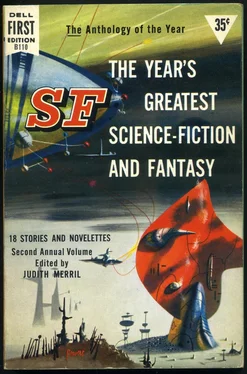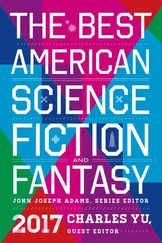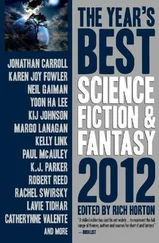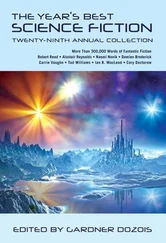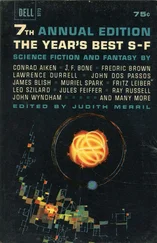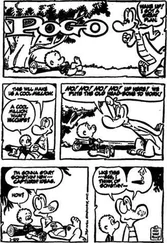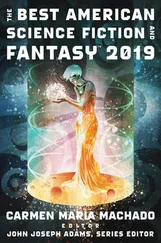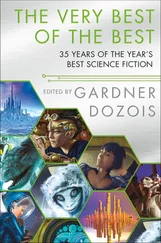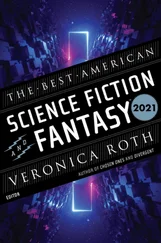Judith Merril - The Year's Greatest Science Fiction & Fantasy 2
Здесь есть возможность читать онлайн «Judith Merril - The Year's Greatest Science Fiction & Fantasy 2» весь текст электронной книги совершенно бесплатно (целиком полную версию без сокращений). В некоторых случаях можно слушать аудио, скачать через торрент в формате fb2 и присутствует краткое содержание. Год выпуска: 1957, Издательство: Dell, Жанр: Фантастика и фэнтези, на английском языке. Описание произведения, (предисловие) а так же отзывы посетителей доступны на портале библиотеки ЛибКат.
- Название:The Year's Greatest Science Fiction & Fantasy 2
- Автор:
- Издательство:Dell
- Жанр:
- Год:1957
- ISBN:нет данных
- Рейтинг книги:3 / 5. Голосов: 1
-
Избранное:Добавить в избранное
- Отзывы:
-
Ваша оценка:
- 60
- 1
- 2
- 3
- 4
- 5
The Year's Greatest Science Fiction & Fantasy 2: краткое содержание, описание и аннотация
Предлагаем к чтению аннотацию, описание, краткое содержание или предисловие (зависит от того, что написал сам автор книги «The Year's Greatest Science Fiction & Fantasy 2»). Если вы не нашли необходимую информацию о книге — напишите в комментариях, мы постараемся отыскать её.
The Year's Greatest Science Fiction & Fantasy 2 — читать онлайн бесплатно полную книгу (весь текст) целиком
Ниже представлен текст книги, разбитый по страницам. Система сохранения места последней прочитанной страницы, позволяет с удобством читать онлайн бесплатно книгу «The Year's Greatest Science Fiction & Fantasy 2», без необходимости каждый раз заново искать на чём Вы остановились. Поставьте закладку, и сможете в любой момент перейти на страницу, на которой закончили чтение.
Интервал:
Закладка:
“Teacher,” she said softly, all the flat emptiness gone from her voice. “Any time you want to take my Anything Box, you just say so.”
I groped through my astonishment and incredulity for words. She couldn’t possibly have had time to look into the Box yet.
“Why, thank you, Sue-lynn,” I managed. “Thanks a lot I would like very much to borrow it some time.”
“Would you like it now?” she asked, proffering it.
“No, thank you,” I said, around the lump in my throat. “I’ve had a turn already. You go ahead.”
“Okay,” she murmured. Then—”Teacher?”
“Yes?”
Shyly she leaned against me, her cheek on my shoulder. She looked up at me with her warm, unshuttered eyes, then both arms were suddenly around my neck in a brief awkward embrace.
“Watch out!” I whispered laughing into the collar of her blue dress. “You’ll lose it again!”
“No I won’t,” she laughed back, patting the flat pocket of her dress. “Not ever, ever again!”
THE YEAR’S S-F
A Summation by the Editor
It surprises me every time.
For months I read stories, weed out the better ones, reread, re-weed, and read and weed again; at the last minute, there is always a dreadful jumble of twice as much as I can use, and all but the very best of it already gone over so often that all powers of discrimination are exhausted. I stew and worry and groan; and somewhere along the way I discover the shape of a book.
That’s the part that always surprises me. It is clear from the start (my contract insists on it) that there will be a book; but right up to the end it seems it will be merely a book full of stories—good ones, perhaps, but without that increment in virtue that appropriate grouping ought to produce. When one and one add up to only two, the combination is sterile.
It was particularly interesting this time, when the pattern of the collection began to emerge, to see how different it was from just a year ago.
Last year the major preoccupation of the better writers in science-fantasy was with the relationship between man and his environment, and especially between people and their machines. This year the emphasis is on interpersonal relations, and particularly on the problems of communication.
More than half the final selections for this volume deal thematically with some aspect of communication. Again and again the statement emerges: We do not know each other. We do not understand each other. And from there they go off in all different directions. Would it really help if we did? How can we find out? Is there a better way than words? What better way? Or can we make words do the job?
Of the remaining stories, half again are concerned with self -understanding, and should perhaps be included therefore in the tally above. Communication is a process commencing within the mind of one person, and terminating inside the mind of another; it is only the means—the technology —of communication that bridges the gap between organisms.
Last year the stories showed such a pronounced paranoid streak that I made several hasty changes at the last moment, to avoid the irksome effect of story after story in which a persecuted protagonist stood alone against a hostile world. This year, it was split-personalities; I had to weed out at the end. (But there are plenty left. “The Far Look” and “Stranger Station,” for instance, are more subtle about it than “The Other Man” or “Anything Box”; but the possession of two bodies instead of one is irrelevant, if two must function as a single organism to survive.)
Oddly in keeping with this trend, the year was in many ways one of reappraisal and self-examination within the professional ranks. Writers and publishers alike shifted cautiously from the bottom-of-the-trough gloom of 1955 toward a wary, but determined, optimism. A year ago, a good many editors were flatly refusing even to consider s-f submissions; and some of the best writers were leaving the field for greener (and more edible) grasses. Today the general attitude appears to be rather: We made mistakes before. If we do it right this time, perhaps we can sell it after all.
Certainly the year’s literary history established that there is a reading public, and a big one, for the subject-matter of science-fantasy. Bridey Murphy alone would have been enough to prove that. (And a good thing, too; the poor girl had to prove something!) In any case, as 1957 starts, there are six new s-f magazines on the stands (though most of them appeared too late to be included in my reading for this book); and among those I have seen so far, I’d guess that three at least— Satellite, Science Fiction Adventures, and, most notably, Venture —will probably survive. In addition, I know of at least three book publishers who have once again started looking actively for science-fiction novels.
It was a critical year, in the sense that the field as a commercial whole hit the bottom of the pit and started scraping its way up the sides again. But it was also a critical year in at least two other senses of the word.
Story content was one. With the increasing pressure of the socio-political environment for conformity in all things, fantasy has begun to resume its traditional importance as a medium for expression of social criticism and individualist views. Writers are returning to the field, and new writers are being attracted to it because it provides an outlet for much that cannot now be said (except to perhaps fifty or a hundred readers at a time, in the littlest magazines) in other areas of fiction writing. Meanwhile, a big new market has been opened up for s-f (and especially for satirical s-f) by Playboy and by the many other men’s-interest magazines that have sprung up in the wake of the Playboy success.
Finally, 1956 was a year of criticism, in the best possible sense. With all due respect to publications that have from time to time offered up evaluations and analyses of the science-fiction “phenomenon,” this year was marked, in my opinion, by the emergence of the most serious and competent literary criticism the field has known.
Two separate (or almost separate) events contributed to this achievement. One was the publication of a book devoted exclusively to serious criticism of the s-f field, written by a man who, as author, TV script-writer, illustrator, agent, editor, and critic, has been professionally engaged in science-fantasy for more than fifteen years. The book, In Search of Wonder (Advent), by Damon Knight, covers ten years, roughly, of active book publishing, and is as keenly and constructively critical as anything ever written about the field. Knight knows what is good and bad, and why.
The other big accomplishment of the year, from the writers’ viewpoint, was the establishment of the Milford Science Fiction Writers’ Conference. This was the first fully professional conference ever held among s-f writers, and the enthusiasm it generated even in advance was perhaps also associated with the feeling expressed so strongly in the new stories—the urgent need for communication. Its effects will show up at longer range, and will be sustained, I think, by a new critical journal now being published as a byproduct of those discussions.
On the surface, 1956 was a poor year in many ways. To come back to the communication definition: the year gave clear evidence of a waiting readership on the receiving end; it was nothing less than spectacular for its accomplishments in self-examination and clarification of objectives on the creative end; but the gap between the two is yet to be adequately bridged. The commercial publishing market, while showing signs of improved interest, has not yet discovered the most successful techniques for conveying this highly specialized kind of communication from writer to reader (with profit to all). Perhaps the accomplishment of this goal will be the substance of next year’s report.
Читать дальшеИнтервал:
Закладка:
Похожие книги на «The Year's Greatest Science Fiction & Fantasy 2»
Представляем Вашему вниманию похожие книги на «The Year's Greatest Science Fiction & Fantasy 2» списком для выбора. Мы отобрали схожую по названию и смыслу литературу в надежде предоставить читателям больше вариантов отыскать новые, интересные, ещё непрочитанные произведения.
Обсуждение, отзывы о книге «The Year's Greatest Science Fiction & Fantasy 2» и просто собственные мнения читателей. Оставьте ваши комментарии, напишите, что Вы думаете о произведении, его смысле или главных героях. Укажите что конкретно понравилось, а что нет, и почему Вы так считаете.
